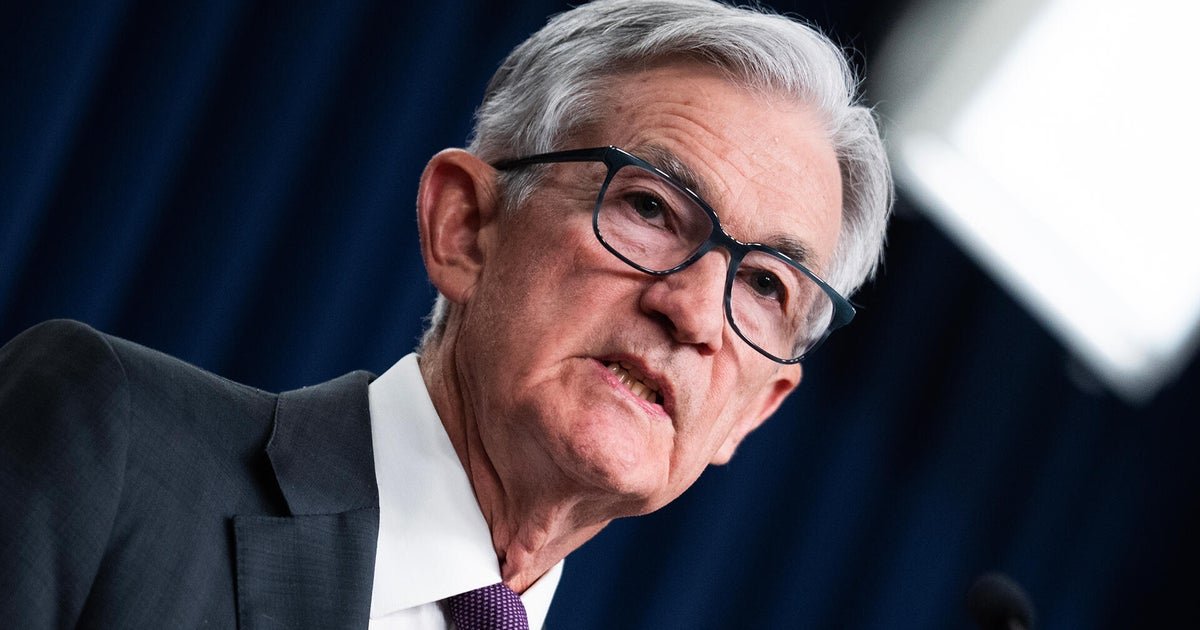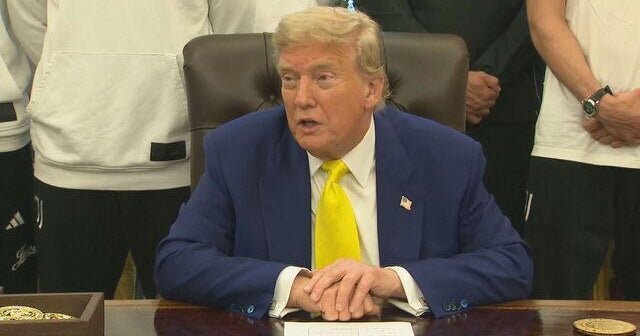The Federal Reserve said Wednesday it is holding its benchmark interest rate steady, marking a continuation of its “wait-and-see” approach as it assesses the impact of the Trump administration’s economic policies.
The central bank also expects inflation to worsen in the coming months, but it still foresees two interest rate cuts by the end of this year, the same as it projected in March.
“For the time being, we are well positioned to wait to learn more about the likely course of the economy before considering any adjustments to our policy stance,” Fed Chair Jerome Powell said at a Wednesday press conference to discuss the rate decision.
By the numbers
The central bank on Wednesday said it will maintain the federal funds rate at its current range of 4.25% to 4.5%.
The rate has remained at that level since President Trump took office in January. The last time the Fed cut rates was in December 2024, when it trimmed rates by 0.25 percentage points.
What does the Fed say about the economy?
When determining rate cuts, the Fed’s goal is to keep inflation low and maintain a healthy job market. In its announcement Wednesday, the central bank mentioned solid labor market conditions and an economy that continues to grow at a “solid pace” although it also signaled caution.
“Uncertainty about the economic outlook has diminished but remains elevated,” the Fed wrote in its announcement.
At the Wednesday press conference, Powell underscored the relative strength of the economy, citing solid labor market conditions including the 4.2% unemployment rate, a low inflation rate and improvements in business and consumer sentiment. But he added that the Trump administration’s new tariffs are likely to drive up inflation and slow down growth in the economy this year.
In its latest quarterly projections for the economy and interest rates, the Fed said it expects that inflation as measured by the Personal Consumption Expenditures Price Index will pick up to 3% by year end. The central bank also expects unemployment to edge higher to 4.5%, up from the current 4.2%.
“The thing that every outside forecaster and the Fed is saying is that we expect a meaningful amount of inflation to arrive in coming months, and we have to take that into account,” Powell said.
The inflation rate, as measured by the Consumer Price Index, was 2.4% in May, still above the Fed’s target rate of 2%. There has been speculation that Mr. Trump’s tariffs could drive up inflation, but so far it has largely remained in check.
Powell said that he expect the Fed will learn a “great deal more” on tariffs over the summer and that the developments will inform their thinking moving forward. In the meantime, the Fed Chair said the central bank is well positioned to hold off on rate cuts. “Because the economy is still solid, we can take the time to actually see what’s going to happen,” he said.
More tariff changes are expected in the coming months. President Trump’s 90-day-pause on reciprocal tariffs ends next month, while a separate 90-day easing of tariffs on Chinese goods is in place until August.
When will the Fed cut rates?
The Fed also signaled it would cut rates just once in 2026, down from two cuts projected in March. Despite this, most economists don’t expect a rate cut at the central bank’s next meeting, scheduled for July 29-30.
Economists give a roughly 60% probability that the Fed will reduce the federal funds rate at its September 17 meeting, according to financial data firm FactSet.
Powell did not clarify when the Fed would cut rates during Wednesday’s press conference. He did, however, tell reporters what could tip the scale, saying, “What we’re waiting for to reduce rates is to understand what will happen with the tariff inflation.”
What does this mean for your money?
The federal funds rate reflects the interest rate banks charge each other for short-term loans. A higher benchmark rate can make borrowing more expensive for businesses and consumers because it helps determine what businesses and consumers pay in interest on loans and credit card debt.
When the benchmark rate is lowered, loan rates tend to follow, making it less expensive to borrow money.
With the Fed keeping rates steady, it’s unlikely that borrowers will see near-term relief on their lending costs.
“This is music to the ears of savers, like retirees, that are earning good income on their hard-earned savings,” said Bankrate’s chief financial analyst Greg McBride in an email. “But it underscores the urgency for borrowers to aggressively pay down high-cost credit card debt and offers little hope of a significant drop in interest rates any time soon.”
What has President Trump said about interest rates?
Mr. Trump has repeatedly called on the Fed to slash rates, including on Wednesday morning before the Fed announced its decision. During remarks to the press, Mr. Trump called out Powell, saying he’s “done a poor job.”
“We had the highest inflation we ever had and then it came down when I got elected,” he said. “Now we have a man who refuses to lower the Fed rate.”
contributed to this report.
#Federal #Reserve #holds #benchmark #interest #rate #steady #todays #FOMC #meeting



